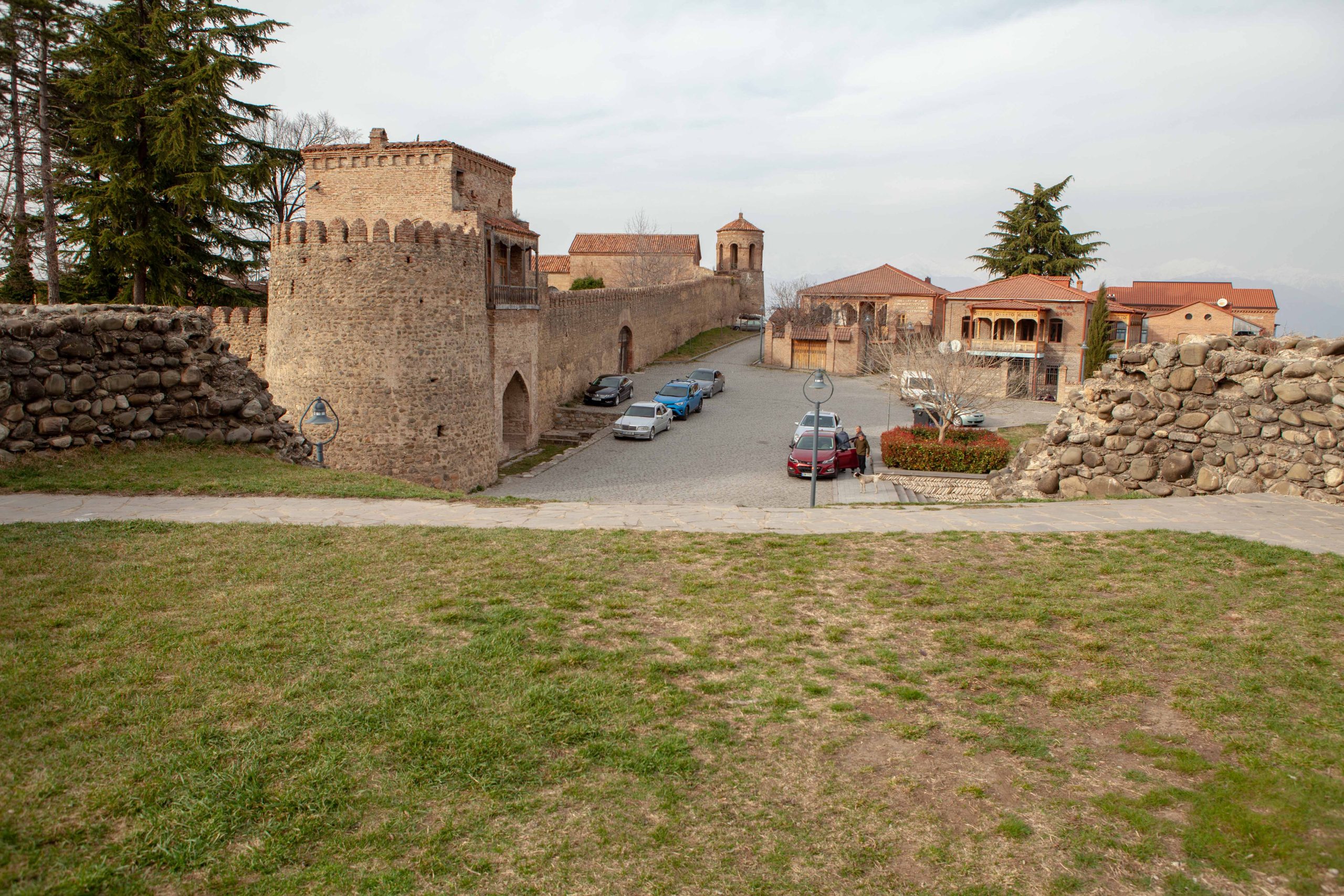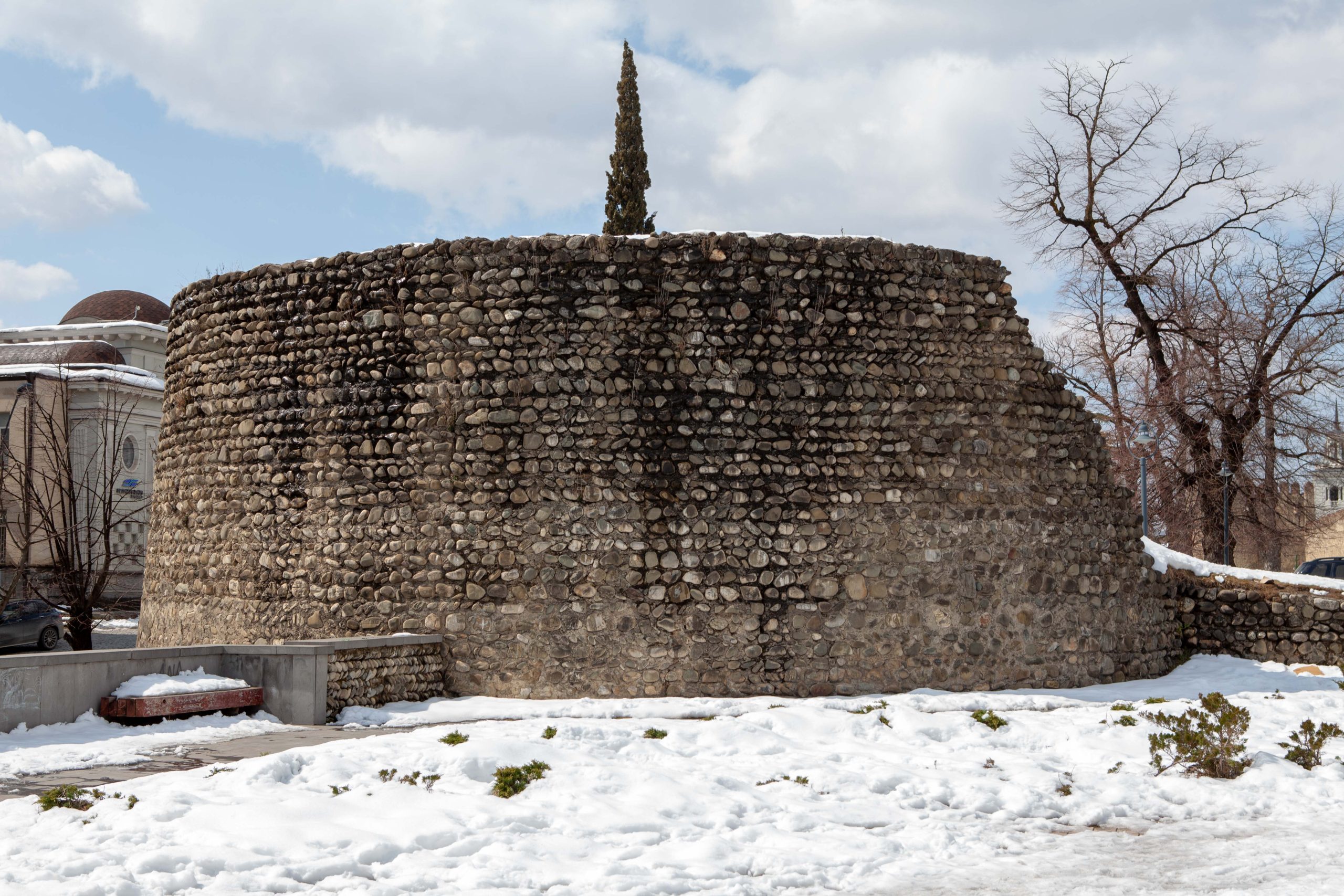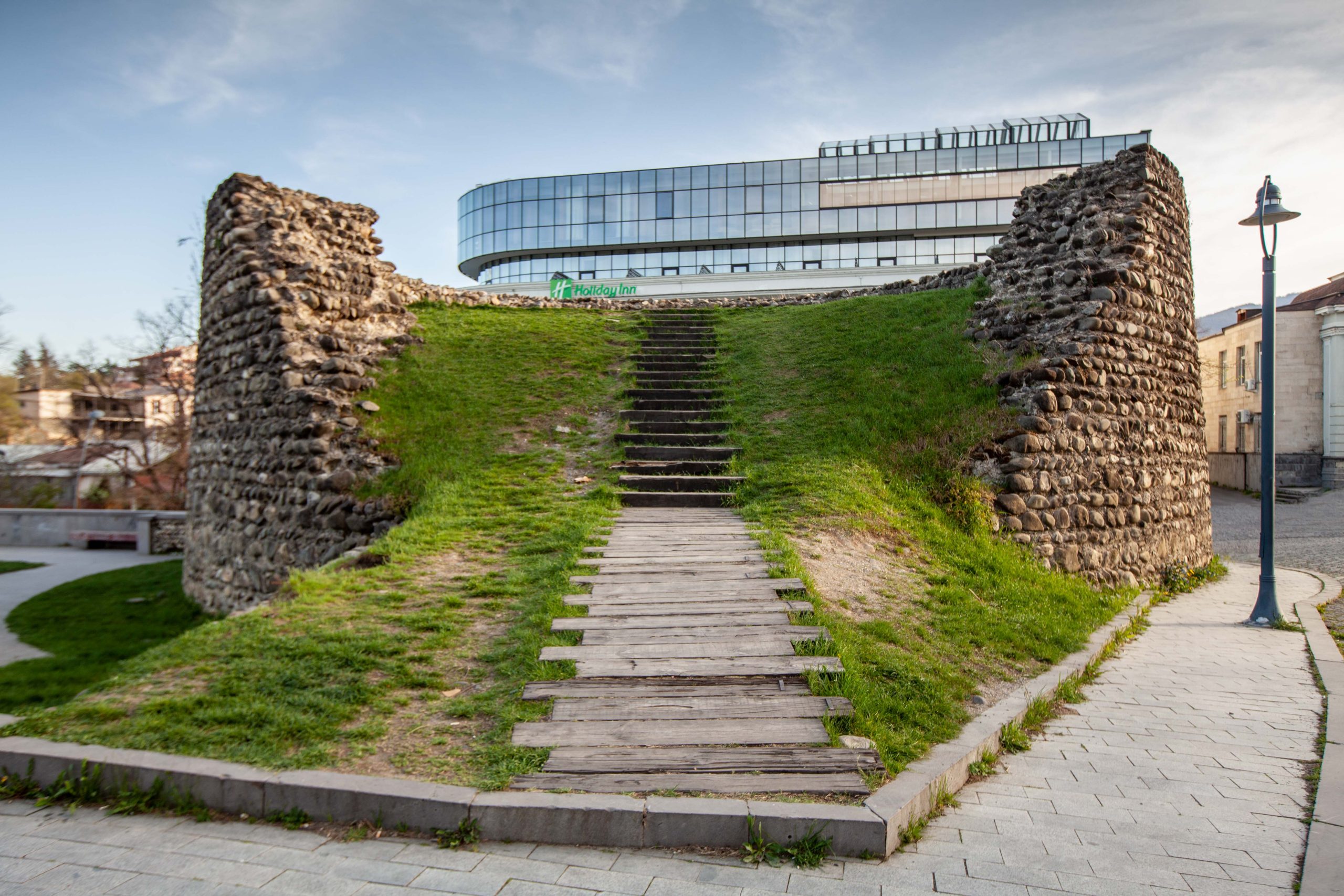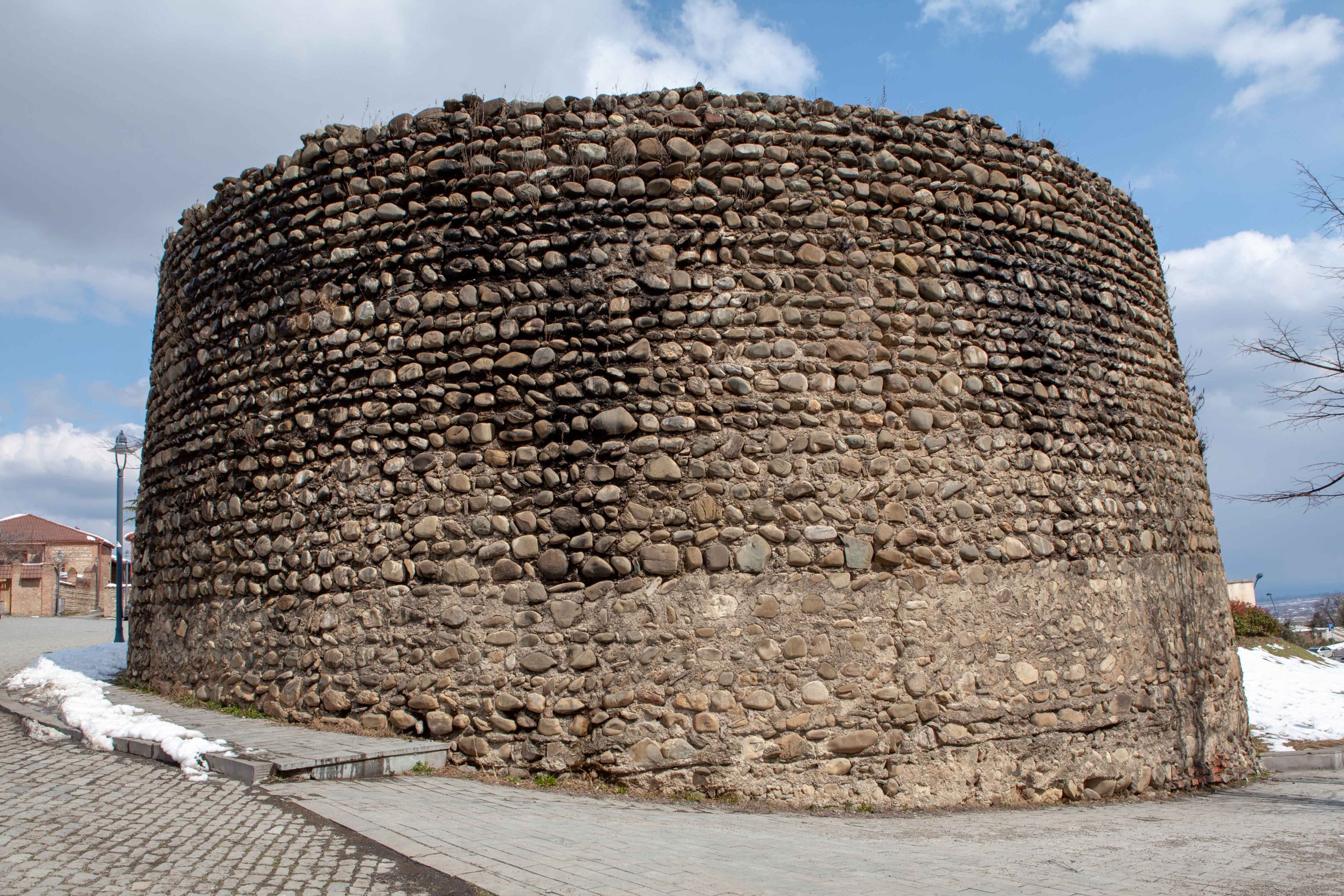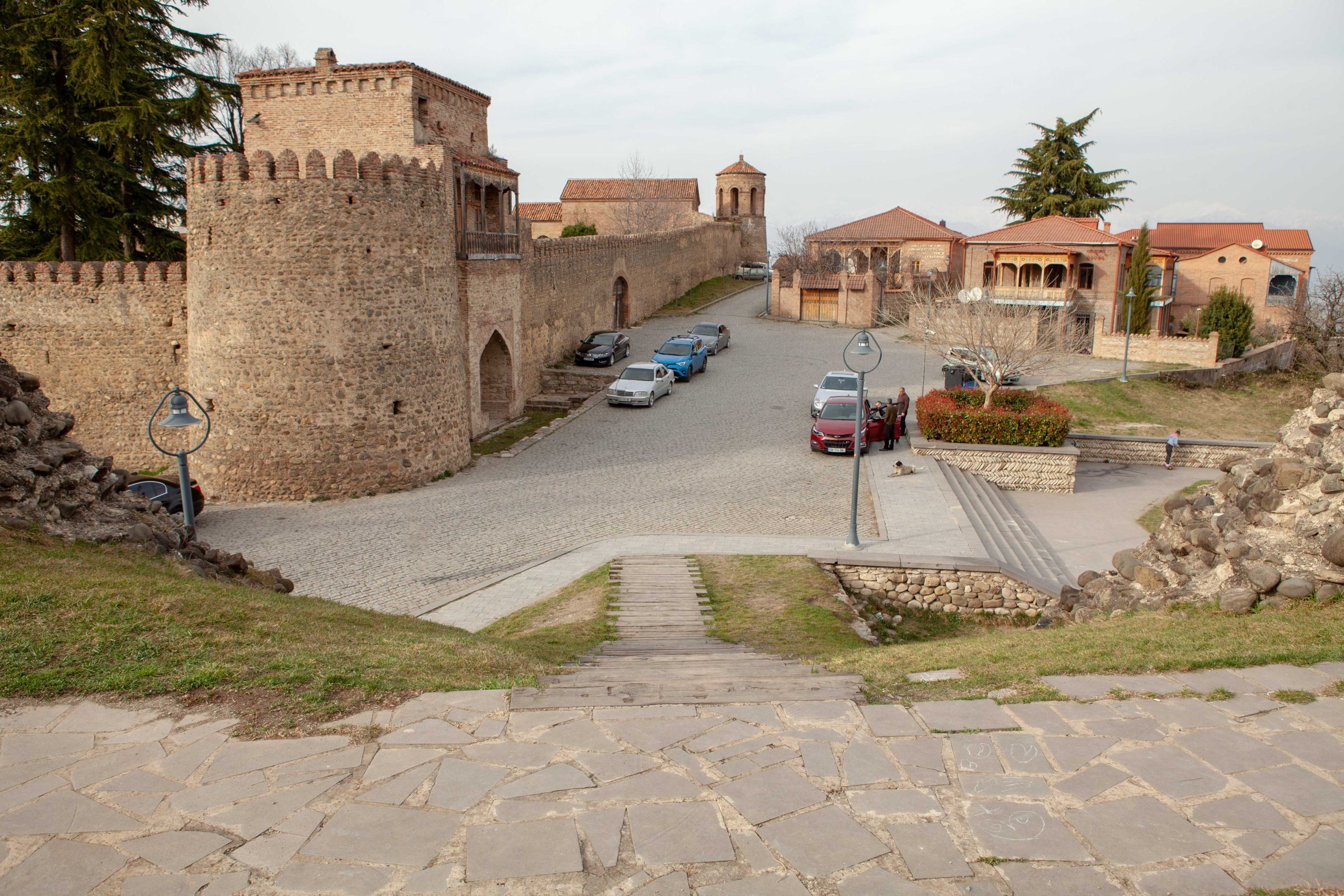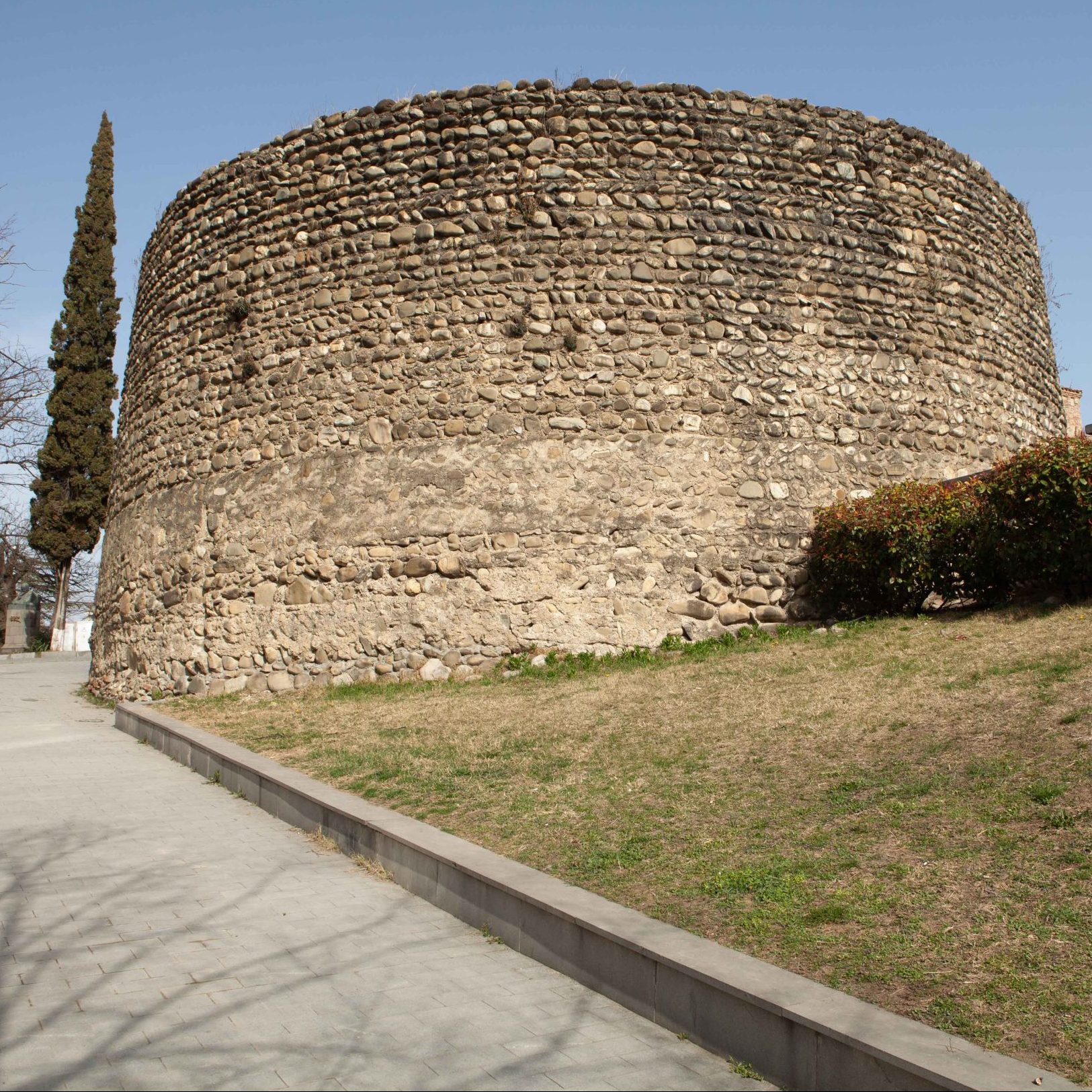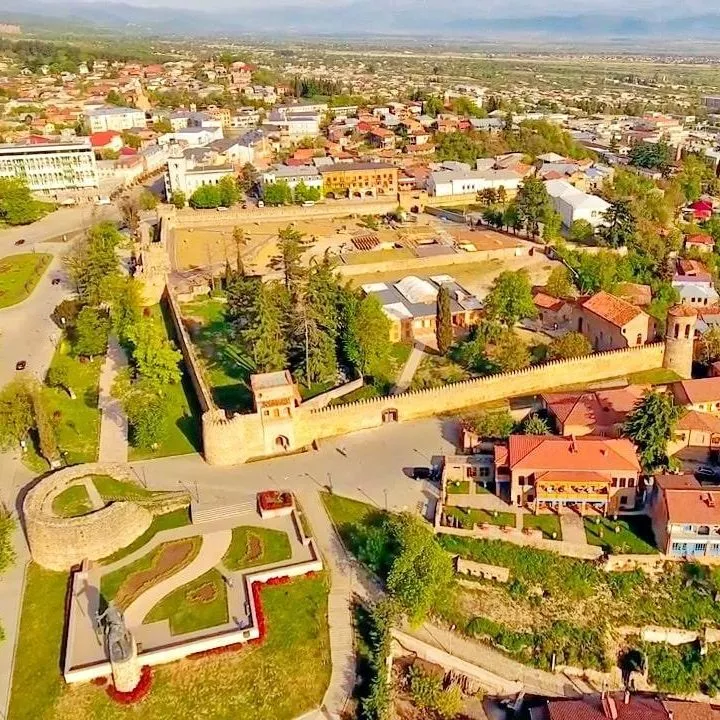თელავის „ბატონის ციხე“ რთული ხუროთმოძღვრული კომპლექსია, რომელიც კახთა მეფეების რეზიდენცია იყო მე-17-მე-18 საუკუნეებში. მე-18 საუკუნის მეორე ნახევარში აქ მეფე ერეკლე მეორის რეზიდენცია იყო მოთავსებული და თელავის მეფეთა სახლი ქართლ-კახეთის სამეფოს პოლიტიკური ცენტრი გახლდათ. ამასთანავე, მას დიდი სამხედრო მნიშვნელობაც ჰქონდა, რაზეც ძეგლის ხუროთმოძღვრული სახე მიგვანიშნებს.
ბატონის ციხის კომპლექსის ნაწილია მის სამხრეთ-აღმოსავლეთის კუთხესთან რამდენიმე მეტრის დაშორებით აღმართული დიდი მრგვალი საზარბაზნე ბურჯი (დიამეტრი 14 მ.), რომელიც XVIII საუკუნის 70-იან წლებშია აგებული. საზარბაზნე ბურჯის გეგმით წრიული, მასიური მოცულობა ნაგებია კირის სქელ დუღაბზე დაწყობილი რიყის ქვის რიგებით. ბურჯის მრგვალი კედლები არ არის შეკრული ბოლომდე და ჩრდილოეთის მხრიდან ციხისკენ მიმართული პირი გახსნილი აქვს ზარბაზნის ასაგორებელი პანდუსით. ნიშანდობლივია, რომ ბურჯის კედელს არ აქვს დაყოლებული სათოფურები და ქონგურები, რადგან, მეცნიერთა აზრით, ბურჯი იმთავითვე განკუთვნილი იყო საარტილერიო ცეცხლის დამშენ სიმაღლედ, რასაც უცხოელ მოგზაურთა ჩანაწერებიც მოწმობს. ამ მოსაზრებას ადასტურებს დარეჯან დედოფლის წერილობითი დოკუმენტიც, რომელიც 1766 წელს მოიხსენიებს ნაგებობას, როგორც ზარბაზნის ბურჯს. (შესაბამისად, ბურჯის მშენებლობის ქვედა საზღვარი 1766 წელია). გადმოცემით, 1836 წლამდე აქ მეფე ერეკლეს დროინდელი ზარბაზანი იდგა.
საზარბაზნე ბურჯი მნიშვნელოვანია, როგორც აუთენტური სახით შემორჩენილი, საქართველოსათვის საიმდროოდ უანალოგო, მე-18 საუკუნის საფორტიფიკაციო ნაგებობა.
The Fortress “Batonis Tsikhe” in Telavi is a complex architectural complex, which was the residence of the Kakhetian kings in the 17-18 centuries. In the second half of the 18th century, the residence of King Erekle II was located here, and the Telavi royal house was the political center of Kartli and Kakheti kingdom. In addition, it was of great military importance, as evidenced by the architectural appearance of the monument.
A part of the complex of Batonis Tsikhe is a large round cannon-tower (diameter 14 m), erected a few meters from its southeast corner, built in the 70s of the XVIII century. The round massive volume of the cannon-tower is made up of rows of cobblestones laid on a thick lime mortar. The round walls of the tower are not fully bound, and the part facing the castle from the north is opened with ramp to wheel the cannon up. It is noteworthy that the wall of the tower has no gun-ports and battlement, because, according to scientists, the tower was originally intended to be the height for artillery fire, as evidenced by the records of foreign travelers. This opinion is confirmed by a written document of Queen Darejan, in which in 1766 the building is mentioned as the cannon-tower.
(Accordingly, the lower limit for the construction of the tower is 1766). According to saying, until 1836 the cannon of the time of King Erekle stood here. The cannon-tower is important as fortification of the 18th century, preserved in an authentic form, which had no analogues in Georgia at that time.
